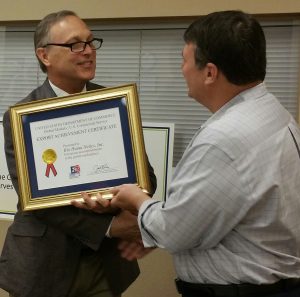
In presentation remarks, it was stated that, “For the past 8 years, Bio Huma Netics has worked closely with the International Trade Administration, especially here in Phoenix, to identify capable global partners and understand foreign countries’ regulations. Presently, Bio Huma Netics exports its products to over 30 different countries in Latin America, Asia, Australia, and Europe. Their global success is proof positive that an Arizona-based manufacturing company can successfully overcome market entry obstacles and achieve noteworthy success in almost any international market.”
BHN CEO Lyndon Smith stated that Bio Huma Netics is very proud of its international sales success and appreciative of this recognition from the United States Department of Commerce. He attributed BHN’s global success to its Huma Gro® line of liquid fertilizers that increase the quality and yield of previously low-producing crops, providing sustainable-agriculture food products while commensurately preserving the environment and the earth’s natural resources.
Related Posts

BHN Sponsors Online Course on Sustainable Organic Agriculture Production
To help increase awareness about sustainable agriculture production, Bio Huma Netics, Inc., (BHN) is sponsoring a FarmProgress course for Certified Crop Advisers (CCAs) and Pest Control Advisers (PCAs) in the United States and Canada. This free online continuing education course, titled “Organic/Sustainable Agriculture Production -2022” aims to help working professionals learn about sustainable farming practices

This Week in Ag #78
Imagine your boss walks into your office, says your productivity is tops in the company, but he’s reducing your salary by 25%. That’s what it’s like being a farmer in 2024. We’re expecting to see the largest year-over-year drop in farm income in history, on the heels of a 19% decline in 2023. Farmers and ag lenders

Food Processing Wastewater Treatment Solutions
Experience the world’s most efficient wastewater remediation products, for operational stability of food processing wastewater treatment facilities.

